Fly Ash Cyclone CFD Simulation, Ansys Fluent Training
$120.00 $60.00 Student Discount
In this project, Fly Ash Cyclone has been simulated and the results of this simulation have been investigated.
Click on Add To Cart and obtain the Geometry file, Mesh file, and a Comprehensive ANSYS Fluent Training Video.To Order Your Project or benefit from a CFD consultation, contact our experts via email (info@mr-cfd.com), online support tab, or WhatsApp at +44 7443 197273.
There are some Free Products to check our service quality.
If you want the training video in another language instead of English, ask it via info@mr-cfd.com after you buy the product.
Description
Fly Ash Cyclone Project Description
In this project, Ansys Fluent software has simulated the motion of particles in a Fly Ash Cyclone CFD Simulation. We used the one-way DPM to simulate the discrete phase. A cyclone is a device used to separate particles from gas and has many applications in industry. The Eulerian-Lagrangian technique is applied in the cyclone separator simulation. In this approach, the gas is treated as a continuum, and Lagrangian tracking tracks individual solid particles through the flow field to determine their position. In cyclone separators, the drag and gravity forces are considered significant due to the large ratio of the gas-particle density.
Cyclone
A Cyclone separator is a particulate control system used in industries to control the particulate emissions to the atmosphere. Cyclones are efficient, cost-effective, and consume low energy. The cyclone separator separates particles of different sizes from gas by centrifugal force. The design of cyclones is a little complex, but its high separation efficiency compensates for it. Cyclones are centrifugal separators consisting of a barrel (the upper chamber) where separation occurs and a cone (the lower section) where collection takes place.
The flow field and performance of the cyclone separator are affected by gas-solid interactions inside the cyclone. The presence of particles does not affect the flow field due to small particle loading in the cyclone, and coupling of the particle effect in-stream is considered significant. The basic principle of separation is that the particles with higher densities have higher inertia, and hence they tend to revolve in a larger radius. The heavier particles spin near the wall where they slide down, and the lighter particles rotate near the center and are collected out of the cyclone at the top.
Geometry & Mesh
The 3D geometry of this project has been produced with SpaceClaim software.
Mesh is created with Ansys meshing software, and the mesh type is unstructured. The number of cells is 1028959.
Fly Ash Cyclone CFD Simulation
To simulate the present model, we consider several assumptions:
- The solver is pressure-based.
- The current simulation is unsteady in terms of time.
- The gravity effect is equivalent to -9.81 m.s-1.
Here is a summary of the steps for defining the problem and its solution in the following table:
| Models | |||
|
Viscous model |
Reynolds stress | ||
|
Discrete phase
|
on | ||
| particle treatment |
unsteady particle tracking |
||
|
material in injection |
Anthracite
|
||
|
particle type in injection |
Inert
|
||
|
injection type |
group
|
||
| Boundary conditions | |||
|
Inlet
|
Velocity inlet |
||
|
velocity
|
magnitude |
5.9 m.s-1 |
|
|
|
discrete phase BC type |
escape
|
|
|
Outlet
|
Pressure outlet |
||
|
gauge pressure
|
0 Pascal |
||
|
discrete phase BC type
|
escape |
||
|
walls |
|
wall
|
|
|
wall motion
|
stationary wall |
||
|
discrete phase BC type
|
reflect |
||
|
Solution Methods
|
|||
|
Pressure-velocity coupling
|
simple |
||
|
Spatial discretization
|
pressure |
second-order |
|
|
momentum |
first-order
|
||
|
Modified turbulent viscosity |
first-order upwind |
||
|
Initialization
|
|||
|
Initialization method
|
hybrid |
||
Fly Ash Cyclone Results
At the end of this simulation, The motion of the particle inside the cyclone was investigated. Particle velocity, pressure, and air gas flow counters were also examined. It was also observed that lighter and heavier particles separate due to centrifugal force and gravity. It is observed that most of the particles entering from the inlet exit from the lower outlet and air also leaves the upper outlet, and a small number of particles are trapped in the upper part of the cyclone.
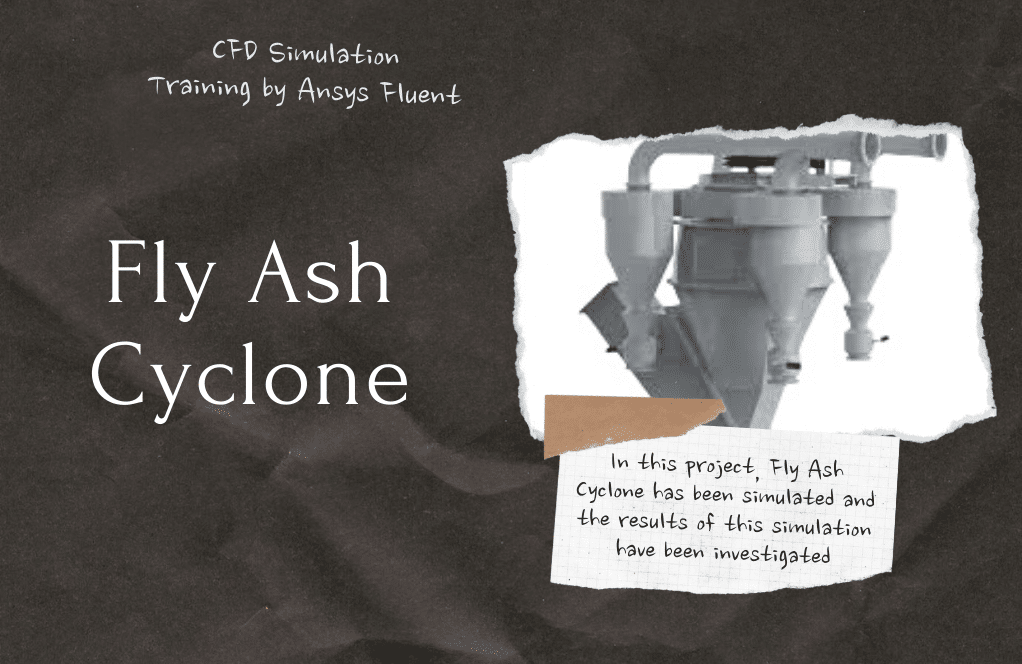
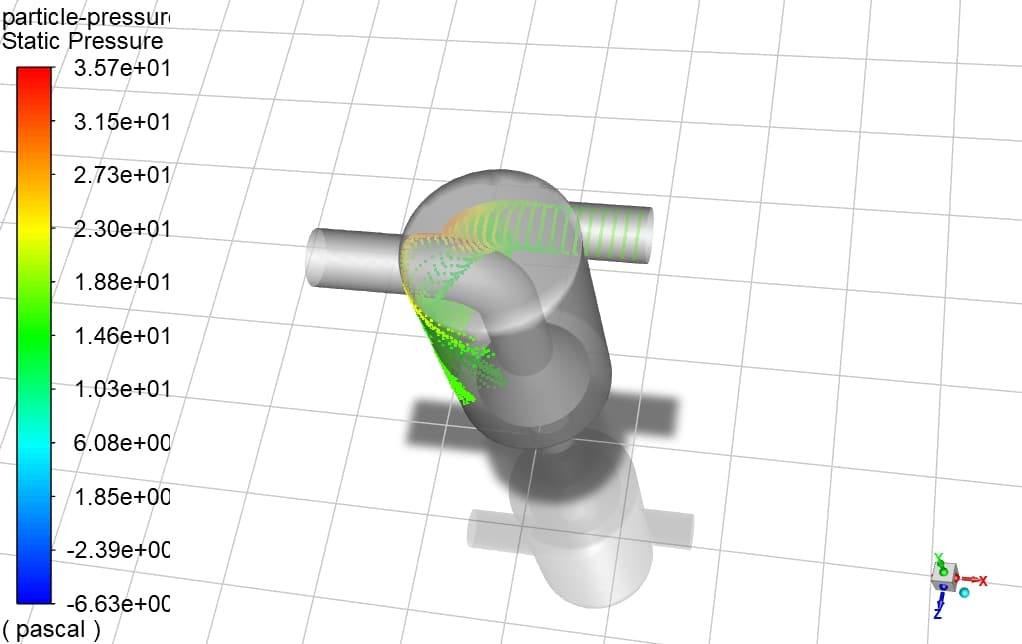
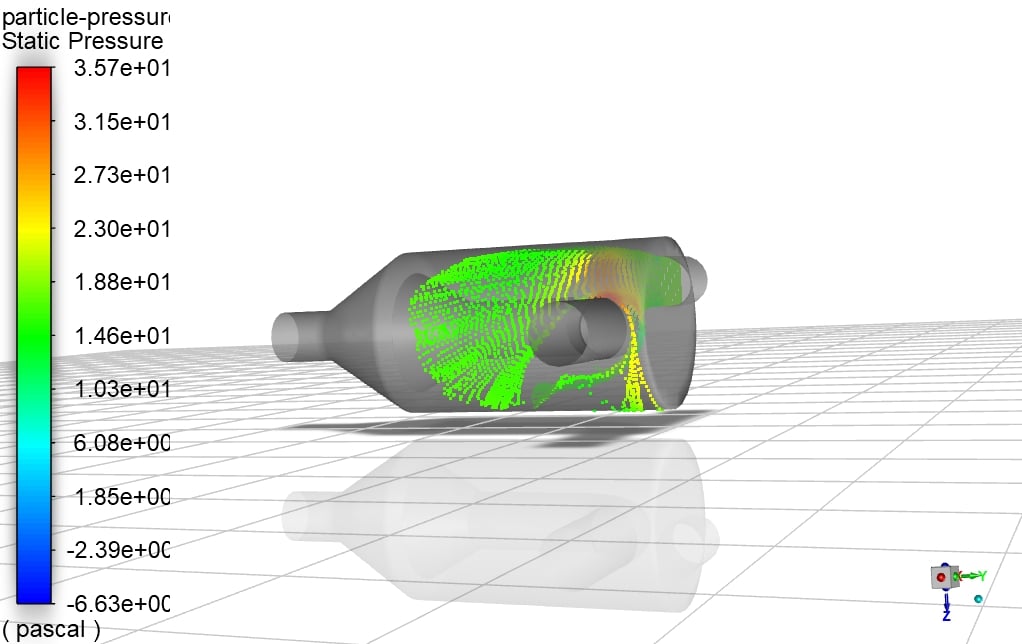
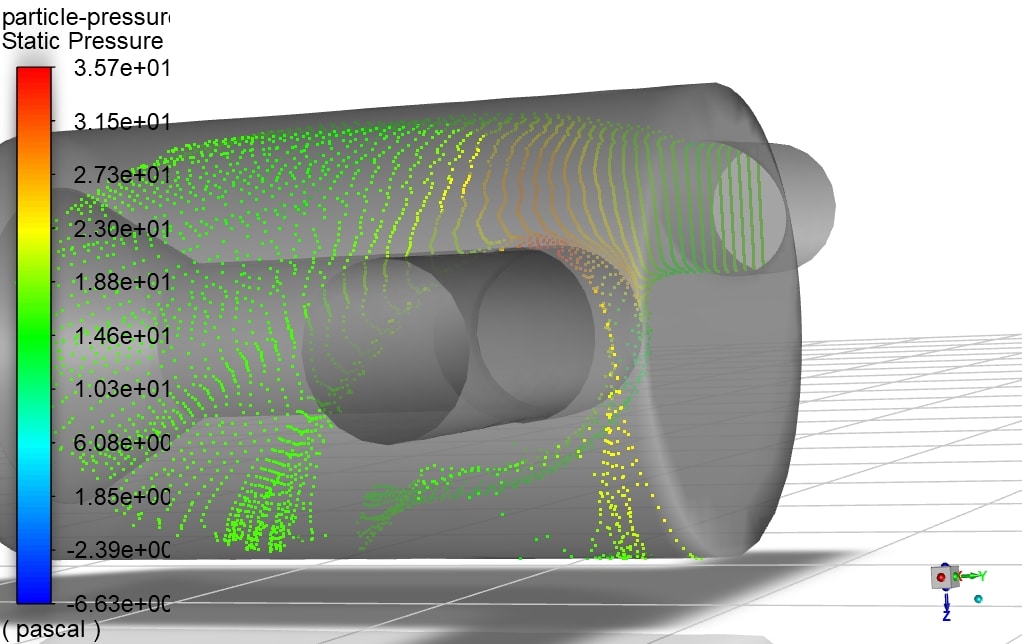
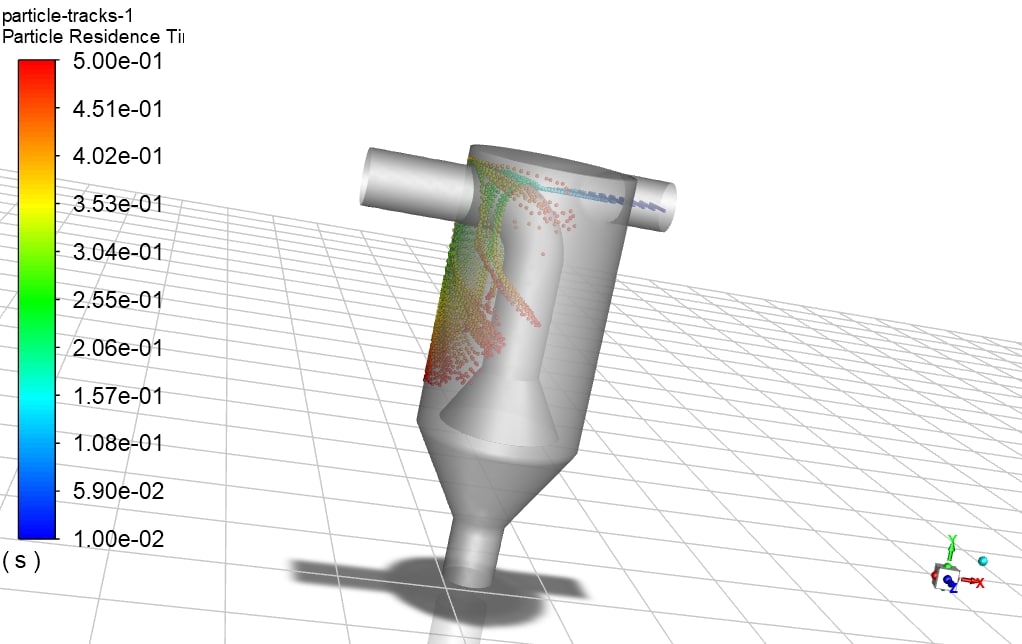
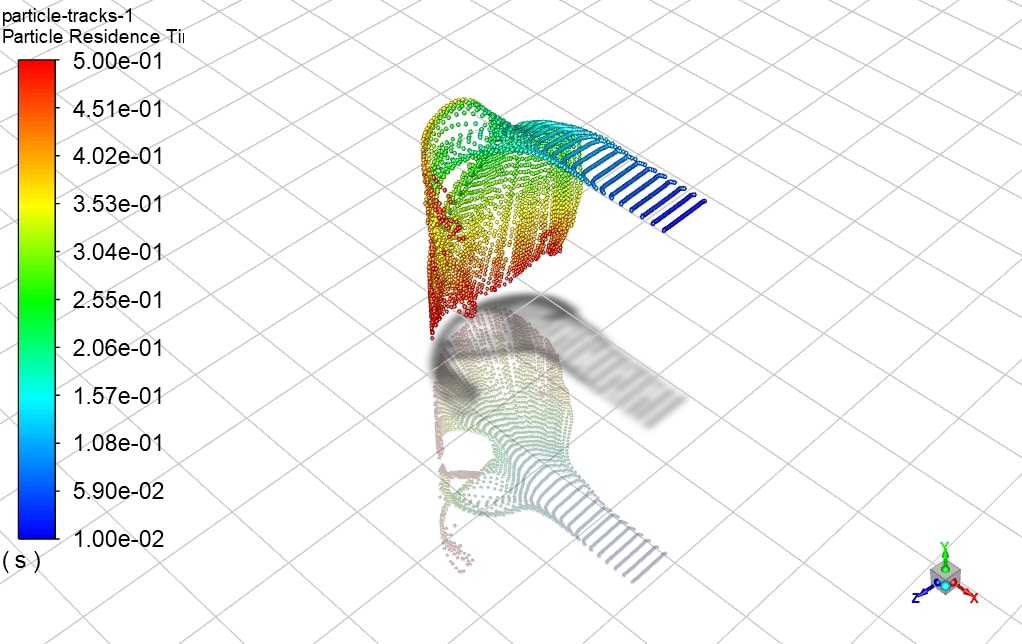
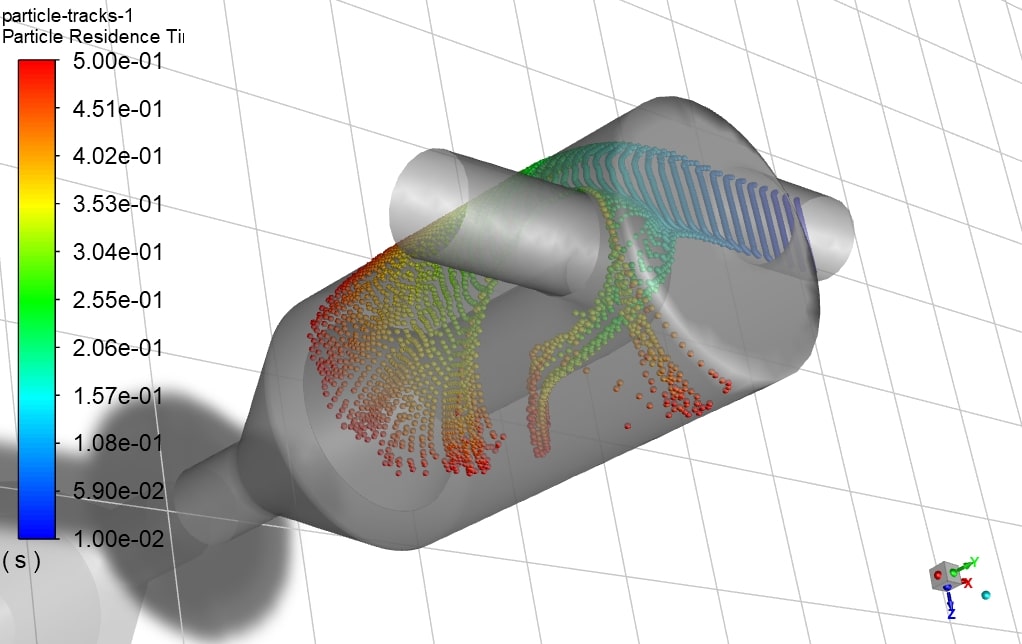
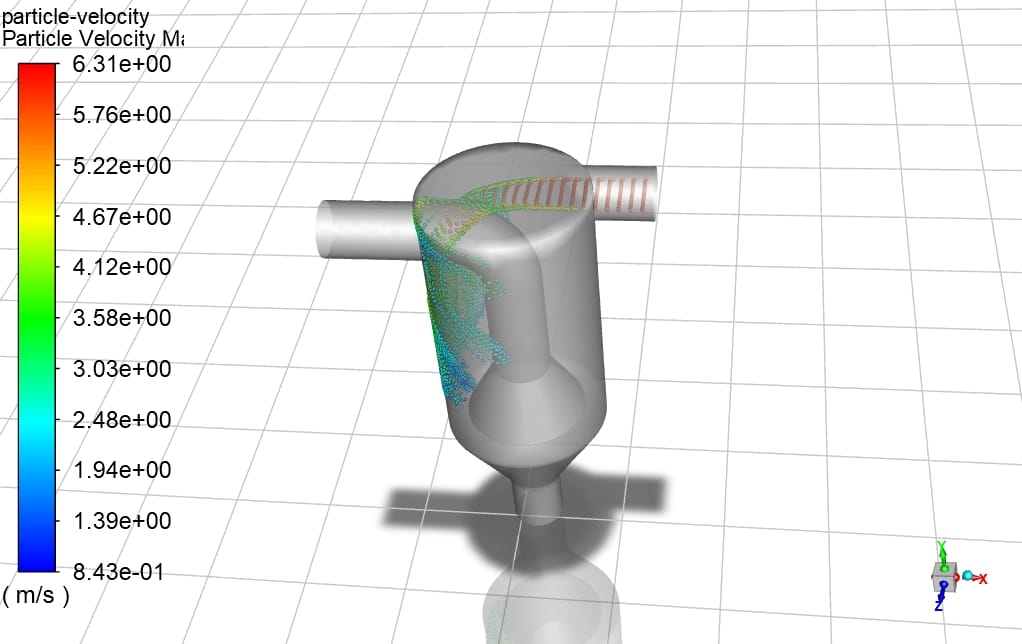

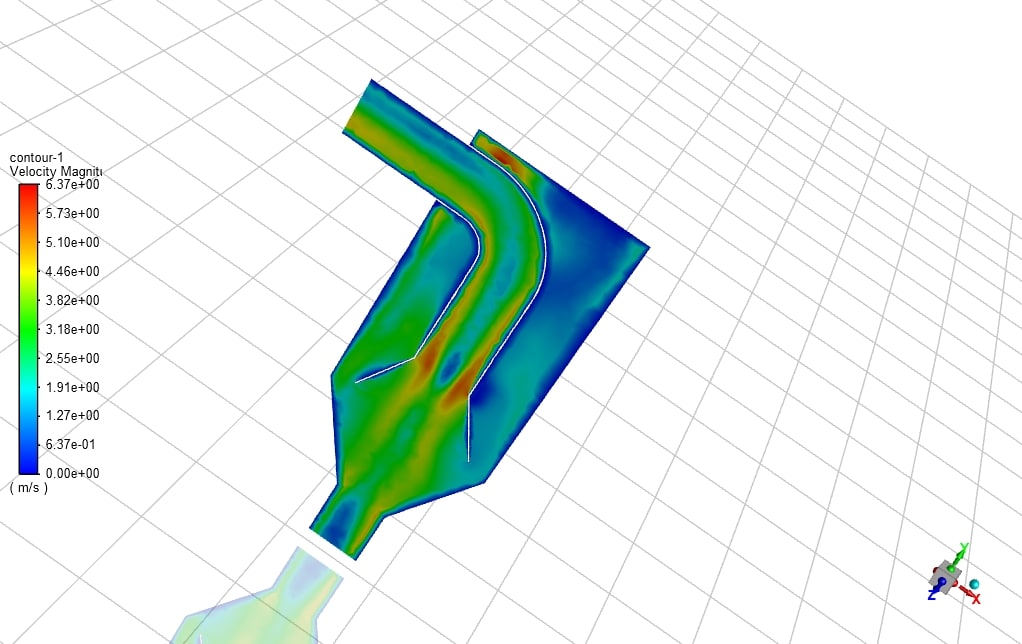
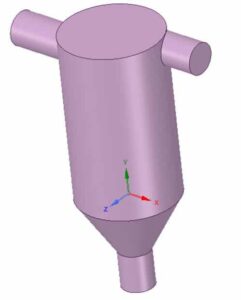
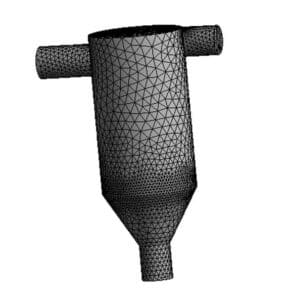
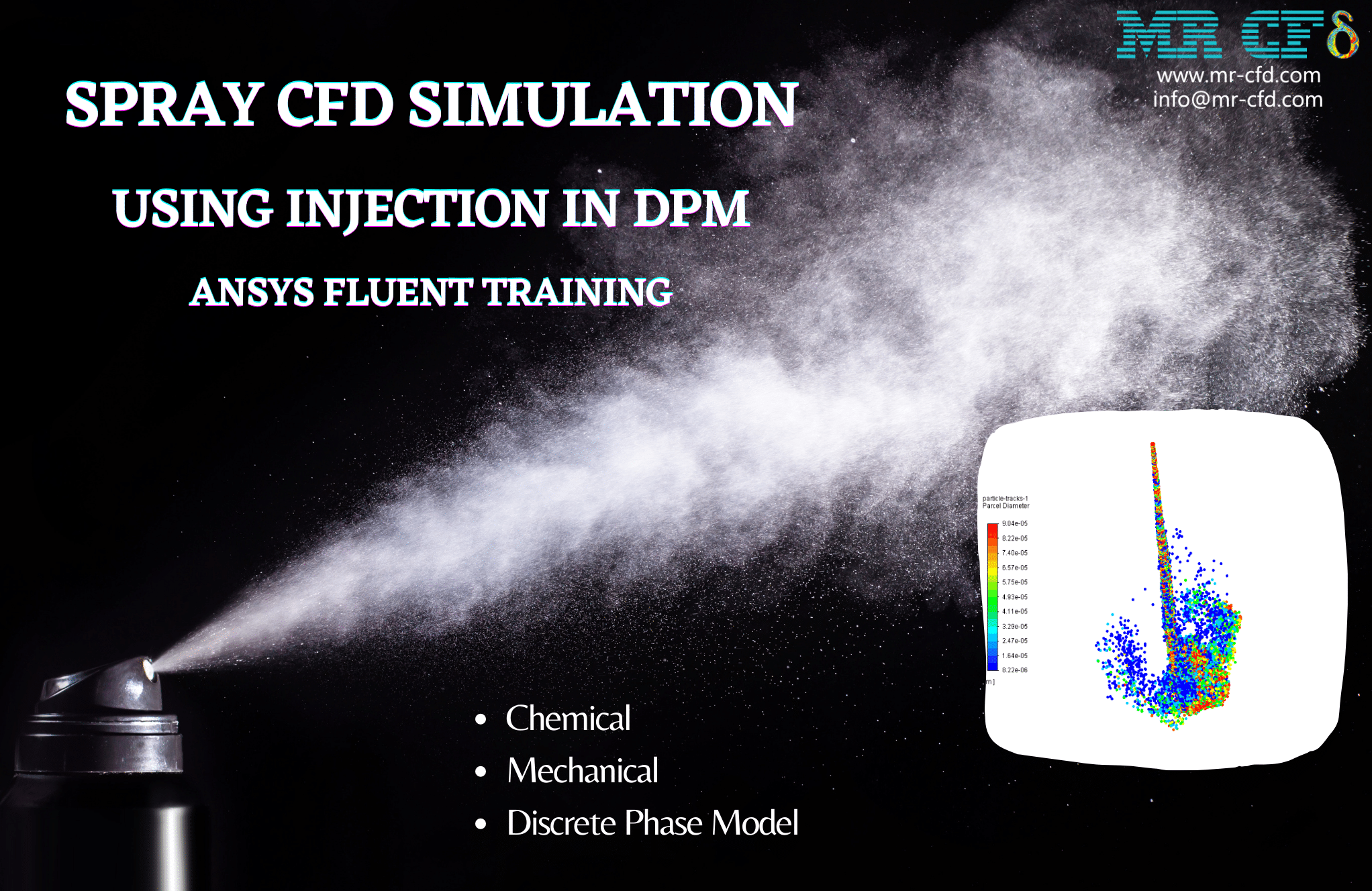


Mr. Raven Runte Jr. –
The Fly Ash Cyclone simulation sounds very detailed and comprehensive. What kind of validations have been done to ensure the accuracy of the CFD results with actual physical performances of cyclones?
MR CFD Support –
The accuracy of any CFD simulation results is closely checked by conducting a validation study. This involves comparing the numerical prediction data with available experimental data or with empirical correlations established by industry standards. For the Fly Ash Cyclone simulation, validation would involve checking particle separation efficiencies and flow field predictions against data from well-characterized cyclone models or actual performance metrics from operational cyclones. Specific methodologies for validation may include cross-checking pressure drop predictions, particle cut size determinations, and overall efficiency ratings.
Chloe Upton –
This sounds incredibly sophisticated. Could you please clarify if the impact of different particle sizes was accounted for in the simulation?
MR CFD Support –
In the simulation of the Fly Ash Cyclone using Ansys Fluent, the effect of different particle sizes on the cyclone separator’s performance is indeed considered. The DPM (Discrete Phase Model) enables us to track a range of particle sizes and their behavior within the cyclonic flow, capturing the dependency of centrifugal and gravity forces on particle size. This feature is crucial to accurately simulate the particle separation process within the cyclone.
Rosalee Bergstrom –
I loved the level of detail presented in the results section. The data on how lighter and heavier particles separate in the cyclone is exactly what makes CFD such a powerful tool for design. Great work!
MR CFD Support –
Thank you so much for your positive feedback! We’re thrilled to know that the detailed results in the Fly Ash Cyclone CFD Simulation met your expectations and provided valuable insights for design considerations. We look forward to delivering more high-quality CFD products that help in your endeavors.
Karina Torphy –
This course seems advanced. Is prior knowledge in CFD required to understand this training, or is it suitable for beginners?
MR CFD Support –
Prior knowledge in CFD is recommended but not strictly required for this training, as the course will guide you through the fundamentals of operating the Ansys Fluent software and understanding the concepts behind cyclone simulation using the Eulerian-Lagrangian technique.
Jeffrey Rippin –
The review is so complicated, was this course beginner-friendly or does it require previous CFD knowledge?
MR CFD Support –
While the intricacies of the simulation might seem overwhelming, our Fly Ash Cyclone CFD Simulation course is designed to be accessible for learners with foundational CFD knowledge. For absolute beginners, we do recommend that you first acquaint yourself with the basic concepts of CFD before tackling this more advanced topic. Our course material provides step-by-step guidance and aims to enhance the learner’s skills progressively.
Roxane Hand –
Just wow! The detail and precision in modeling a Fly Ash Cyclone’s particle motions is truly remarkable. I can see this being incredibly useful for industries looking to enhance their particulate control systems. Thumbs up to the MR CFD team for delivering a top-notch CFD learning product.
MR CFD Support –
Thank you for your enthusiastic feedback! We’re thrilled to hear that our Fly Ash Cyclone simulation training has impressed you and find it of practical value. MR CFD Company is committed to providing high-quality educational materials. Your compliment boosts our motivation to keep up the good work!
Miss Yasmeen Dach PhD –
What materials are used for the particles in this Fly Ash Cyclone CFD Simulation?
MR CFD Support –
In this simulation, the material used for the particles within the Fly Ash Cyclone CFD Simulation is Anthracite. This material choice allows for the study of particle dynamics commonly found in industrial processes.
Prof. Noelia Boehm Jr. –
I found the one-way DPM explanation very enlightening. Great work simplifying such a complex process!
MR CFD Support –
Thank you for your kind words! We’re thrilled to hear that our explanation of the one-way Discrete Phase Model in the Fly Ash Cyclone simulation was helpful and clear. If you need more information or have further interest in CFD simulations, feel free to reach out to us. We’re here to assist!
Mark Reynolds –
Wow, these results are fascinating! It demonstrates a high level of accuracy in particle gas separation, which reflects an advanced understanding of cyclone dynamics. Kudos to MR CFD for this intricate yet practical simulation using Ansys Fluent.
MR CFD Support –
Thank you for your kind words and for recognizing the complexity of the simulation. We’re glad that the results met your expectations and provided valuable insights into cyclone dynamics. It’s our pleasure to offer such detailed and practical CFD trainings. If you have any further inquiries or need more information, feel free to ask.
Sean Kerluke –
I noticed that the simulation uses the one-way DPM model. Can you explain when it is appropriate to use a one-way DPM instead of a two-way or four-way coupling in particle-laden flows?
MR CFD Support –
The one-way DPM (Discrete Phase Model) can be appropriately used when the particle concentration in the flow is so low that the particles do not significantly affect the continuous phase fluid flow and, therefore, the fluid’s impact on the particles needs to be considered, but not vice versa. This approach simplifies the simulation and allows for less computational cost while still providing satisfactory results for the specific conditions where particle interactions with the fluid are much more significant than interactions among particles or feedback effects on the fluid. However, for higher particle loadings where the interactions between the particles, as well as with the continuous phase, become significant, two-way or even four-way coupling may be required for an accurate simulation.
Dr. Jazmyn Rodriguez Sr. –
The practical applications of the training are fascinating! The visual results presented certainly help to grasp the separation process in cyclones. The detailed explanation of forces at play was really helpful.
MR CFD Support –
Thank you for your positive feedback! We’re pleased to hear that the visual results and detailed explanations in our Fly Ash Cyclone CFD Simulation training were helpful for you. We always aim to provide comprehensive and practical learning materials. If you have any more feedback or need further information, please don’t hesitate to contact us.
Alvis Rice –
I learned so much from the Fly Ash Cyclone CFD Simulation training. The step-by-step process was clearly presented, and understanding the DPM and separation process was fascinating. Highly recommend for those into particle dynamics!
MR CFD Support –
Thank you for your kind words! We’re thrilled to hear that you found the training on Fly Ash Cyclone CFD Simulation insightful and that it effectively guided you through the dynamics of particle separation. Your enthusiasm for the subject matter inspires us, and we look forward to providing you with more valuable learning experiences.
Jany Price Jr. –
I was really impressed with the clarity of the results considering the complexity of particle dynamics in a cyclone separator. Especially, the separation of lighter and heavier particles demonstrated how well the simulation managed to accurately replicate the actual behavior in industrial cyclones. Great job on the visualization of the particle motion as well!
MR CFD Support –
Thank you for your positive feedback! We are thrilled to hear that our simulation met your expectations and provided clear insights into the cyclone separator’s particle dynamics. Our team works hard to ensure high-quality visualization and accurate results to facilitate a deep understanding of complex mechanisms. If you have any further questions or need assistance, feel free to reach out.
Suzanne Walsh II –
I’m really impressed by the way the cyclone separator’s performance is demonstrated in the simulation. The level of detail in the final results truly enhances my understanding of the particle separation process.
MR CFD Support –
Thank you for your kind words! We’re thrilled to hear that our Fly Ash Cyclone CFD Simulation has provided you with a clearer understanding of the particle separation process. We pride ourselves on delivering detailed and accurate simulations to aid in education and research. If you have any further questions or require more insight into our training materials, please don’t hesitate to ask!
Miss Etha Armstrong –
The detail on particle separation is fascinating. Do the results show what size particles remain trapped in the upper part of the cyclone?
MR CFD Support –
In a cyclone simulation such as this, particles are typically separated based on their size, with larger and heavier particles moving towards the outer edges and smaller, lighter particles remaining closer to the center due to lower centrifugal force acting on them. The size of particles that remain trapped in the upper part of the cyclone would be smaller and lighter compared to those that exit from the lower outlet. For specific size-related data, you would need to refer to the results, which will provide detailed insights into the distribution of particle sizes and where they end up within the cyclone separator.
Arvid Murray –
Do you have any trainings about how to interpret the results from a unsteady Reynolds stress model in Ansys for cyclone simulations? The report was excellent and went into valuable details. I’m curious about reading similar data from my projects in the future.
MR CFD Support –
Thank you for your kind words regarding our Fly Ash Cyclone CFD Simulation report. Yes, we do provide training programs centered around understanding and interpreting the results generated by using an unsteady Reynolds stress model in Ansys for cyclone simulations. These programs are catered to deepen your understanding of computational fluid dynamics (CFD) concepts applied in industrial contexts like cyclones and help you gain the proficiency necessary to perform your analyses with confidence.
Larry Toy –
Absolutely thrilled with the depth of the Fly Ash Cyclone CFD simulation! The separation phenomena were clearly visualized, and it gave me solid insights into particle dynamics. Top marks for an exceptional product!
MR CFD Support –
Thank you for your positive feedback! We are delighted to hear that our Fly Ash Cyclone CFD simulation exceeded your expectations and provided valuable insights. Your satisfaction is our top priority. Looking forward to serving you with more high-quality simulations in the future!
Quinn Koss –
Great product! The explanation of how the Eulerian-Lagrangian technique applies to the cyclone separator and separates particles efficiently due to centrifugal force was insightful. Especially interesting was how the presence of particles does not significantly affect the flow field because of their small loading, which is critical for industrial applications. Learning how lightweight particles and heavier ones are separated in practice was educational and the detailed setup for boundary conditions, discretization, and the initialization method provided a clear understanding of the simulation process.
MR CFD Support –
Thank you for your positive feedback! We are thrilled to hear that our Fly Ash Cyclone CFD Simulation training material provided you with a clear and comprehensive understanding of cyclone separators. It’s rewarding to know that the inclusion of concepts such as the Eulerian-Lagrangian technique and the impact of particle density on the separation process were valuable to you. We appreciate your appreciation of the detailed explanation of the setup and simulation process. If you have any further questions or need more details, feel free to reach out. Happy learning!
Jennifer Kunze –
The Fly Ash Cyclone simulation is top-notch. You can see the particles’ movement inside the separator so clearly, it feels almost like watching the real thing. It’s apparent how much effort and precision went into meshing and the overall CFD setup. The details in the results, particularly the differentiation in the trajectories of heavier and lighter particles, gave me new insights into cyclone separators.
MR CFD Support –
We’re thrilled to hear about your positive experience with our Fly Ash Cyclone CFD Simulation product. Our team puts a lot of effort into ensuring that our simulations are as informative and accurate as possible. Your feedback is greatly appreciated, and it’s wonderful to know that the product provided you with valuable insights! Thank you for sharing your thoughts with us.
Ernestine Ullrich II –
This course on Fly Ash Cyclone Simulation exceeded my expectations. The mix of theory with practical steps in Ansys Fluent was very educational. The complex physics behind cyclone operations were demystified and the detailed explanation of particle behavior under different forces was especially insightful. The set up for DPM and boundary conditions were clearly demonstrated rendering the course invaluable for my CFD skill development.
MR CFD Support –
We greatly appreciate your positive review on the Fly Ash Cyclone CFD Simulation course! It’s thrilling to hear that we could help demystify the complex physics behind cyclone operations and provide you with useful insights and practical ways to expand your CFD skills. Thank you for choosing our training, and we look forward to being a part of your continuous learning journey.
Florian Hammes II –
This training sounds comprehensive, but I’m curious which factors can affect the separation efficiency of the cyclone the most and how they were addressed in this simulation.
MR CFD Support –
The separation efficiency of a cyclone is most significantly affected by factors such as particle size and density, inlet velocity, cyclone design (e.g., diameter, height, cone angle), and operational variables like gas flow rate. In this simulation, the gravity effect on particles, centripetal forces due to rotation, and drag forces acting on the particles were carefully considered as part of the Eulerian-Lagrangian technique to ensure accurate tracking and separation. Additionally, various boundary conditions and solution methods, like the Reynolds stress model for accounting for flows with high levels of swirl and recirculation inside the cyclone, supported capturing these effects adequately in the performance prediction of the cyclone separator.
Mr. Tracey Lakin –
This training looks incredibly detailed! The use of both the RSM viscosity model and DPM for the fly ash particle tracking contributes so much to the reality of the simulation. The explanation of the effects of centrifugal force and gravity on particle separation was particularly enlightening.
MR CFD Support –
Thank you for your positive feedback! We are glad that you found the Fly Ash Cyclone CFD Simulation training useful and that the detailed explanation of the forces at play contributed to your understanding of the particle separation process. Your appreciation encourages us to continue providing high-quality learning materials.